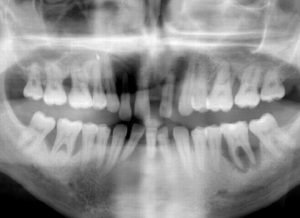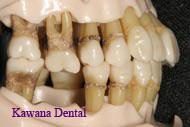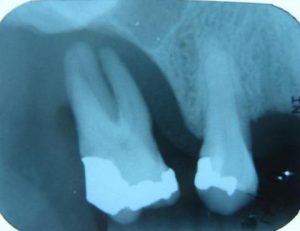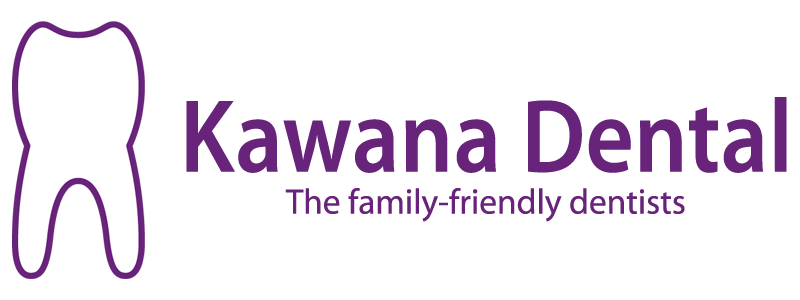30 Oct Gum (Periodontal) Disease
We used to think it was inevitable (getting long in the tooth) but now know hygienist treatment can prevent this disease.
Most adults are walking around untreated with bad breath, losing bone around their teeth and growing colonies of bacteria that increase risk of diseases from heart attack to having low birth weight babies. It truly is an unknown problem in our community….but one that shouldn’t be ignored Link to Hygiene page. Periodontal disease means simply disease around (i.e “peri”) tooth (dont). It involves the breakdown of the the supporting foundations of teeth.
The tooth itself can be sound but have completely lost the bone supporting it. This can and often is completely painless with the only symptoms being bleeding when brushing or flossing the gum/ tooth border and bad taste or breath.
The gums may not have receded at all before the bone is lost irretrievably.
The key is keeping plaque away from between the gum and the tooth with brushes, floss and accessories like piksters. Our hygienists can remove plaque and its hardened equivalent “calculus” ( tartar in old jargon) before it can infiltrate too far down the root surface and begin destroying the bone. Once the bone is gone, it doesn’t grow back. The key to keeping your teeth is keeping enough bone around the roots.
What is regular or standard cleaning?
A regular cleaning is known as prophylaxis in dental terms. The Australian Dental Association describes a prophylaxis as removal of plaque, calculus and stains from the tooth structures.
Removal of plaque, calculus and stains is accomplished by dental instruments that scrape away the deposits from the teeth. A device called an ultrasonic scaler may also be used. This is followed with polishing with a soft rubber cup and pleasant tasting polishing paste or a polishing jet call a prophyjet.
Calculus is also known as tartar and is a hard, mineralized deposit, somewhat like cement, that is formed from the plaque in the mouth and the minerals in the person’s saliva.
Plaque is the soft, sticky substance that forms on teeth composed of bacteria and bacterial by-products.
A regular cleaning is recommended 6 monthly for persons who do not have any bone loss, periodontal disease, or infection around their teeth. There should also be no bleeding, mobility of teeth, receded areas where the gums have pulled away from the teeth, or gaps where the spaces around the roots of the teeth are exposed. In other words, the mouth should be health, with no gum and bone problems.
What is a root planing procedure?
Root planing removes bacteria and their toxins, calculus/tartar and diseased deposits from the surfaces of tooth roots. Scraping or scaling is required down the root surface to clean the “pockets” between the tooth root and the gum. Root planing is typically one of the first steps in treating periodontal disease. The aim is to reduce the depth of the diseased pockets and produce healthier tissue and anatomy to halt the bony destruction and allow easier cleaning and maintenance.
We use topical anaesthetic gel or other anaesthesia to ensure that this is not a painful experience.
What is periodontal maintenance?
If you have periodontal disease, you may require root planing to remove diseased deposits from the roots of your teeth. The removal of all the diseased tissue is called subgingival curettage. After the disease process is under control a regular cleaning is not appropriate anymore. Instead, you will require special on-going gum and bone care procedures to keep your mouth healthy.






